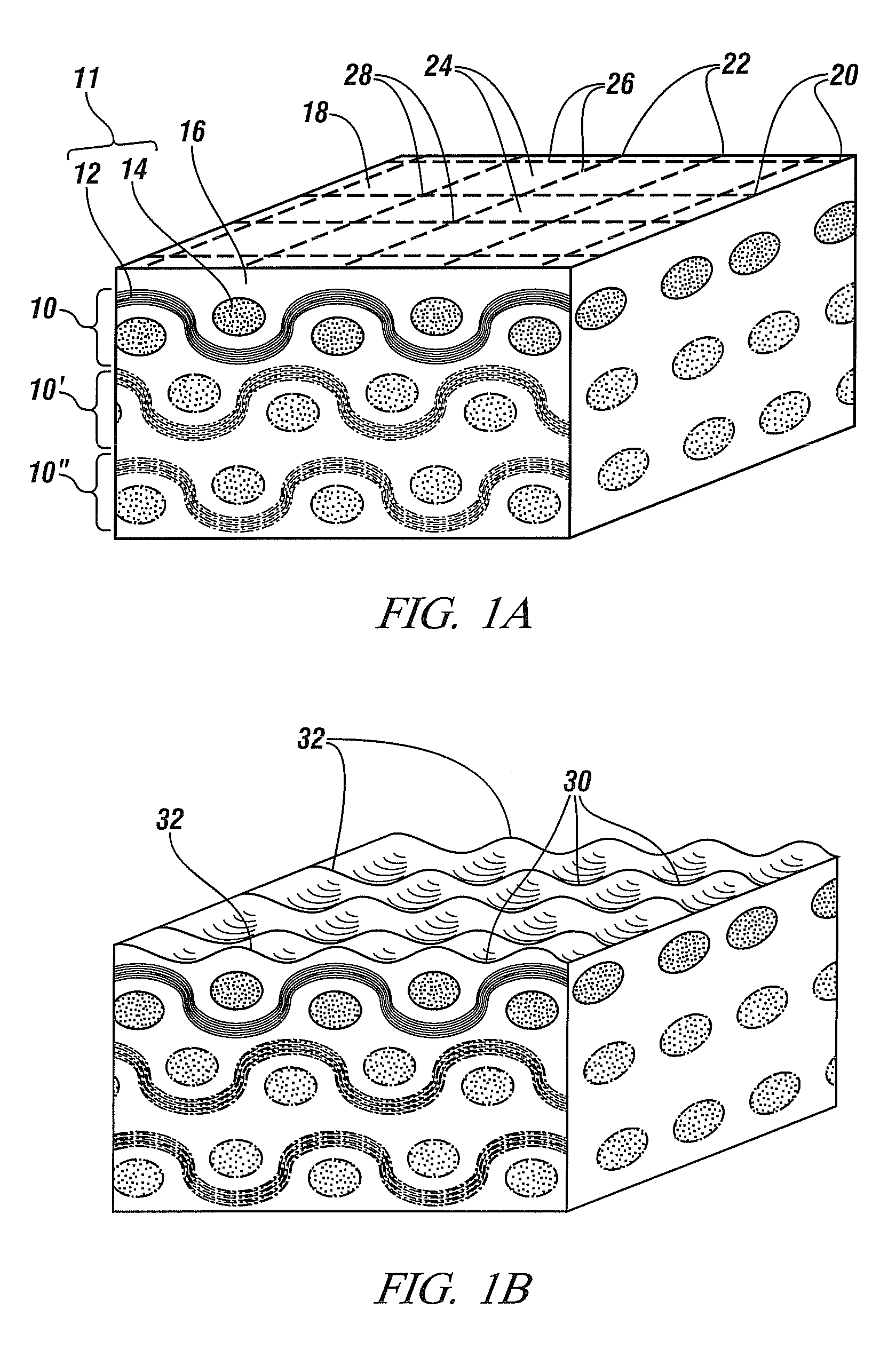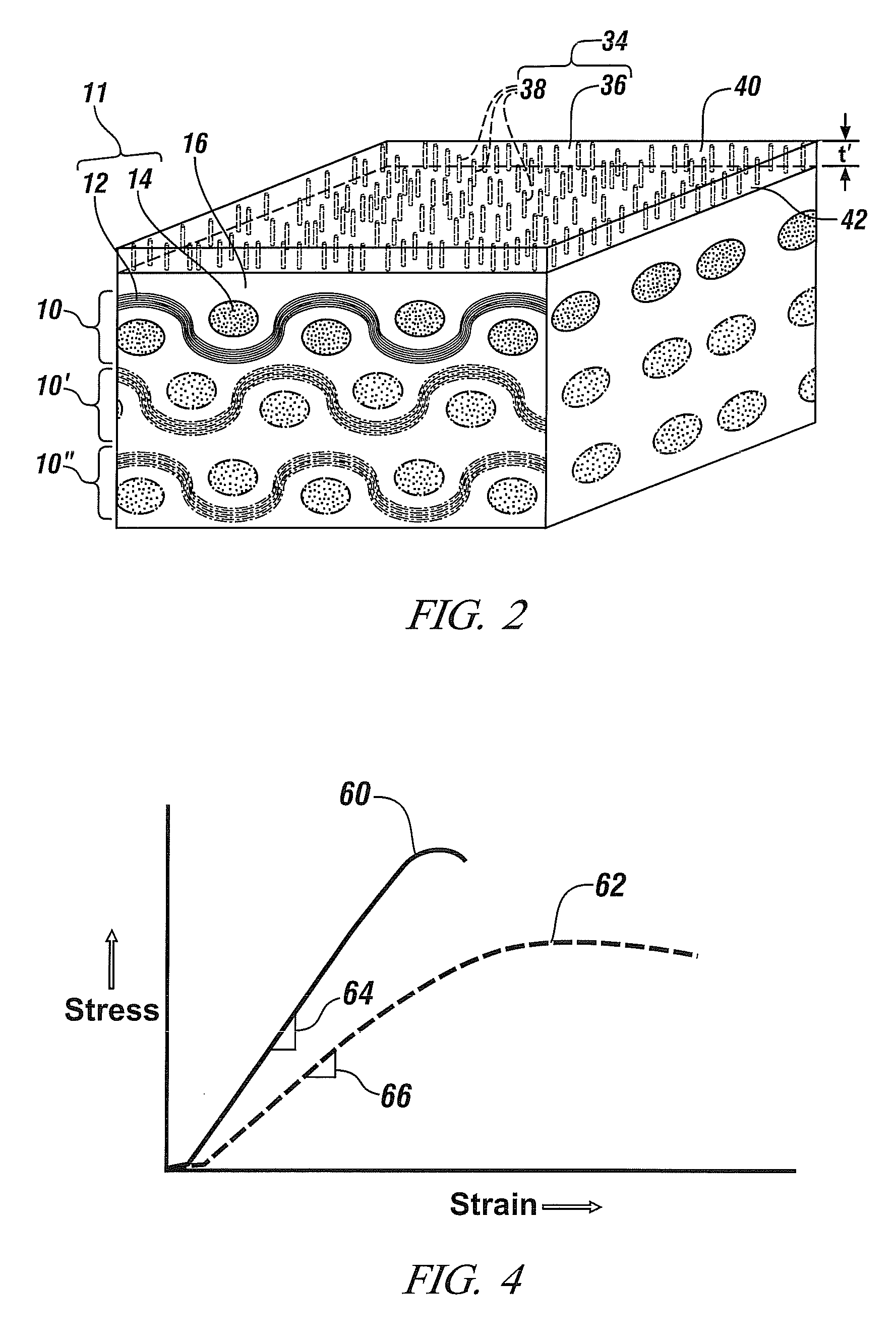Print through reduction in long fiber reinforced composites by addition of carbon nanotubes
a technology of carbon nanotubes and which is applied in the field of printing through reduction in long fiber reinforced composites by adding carbon nanotubes, can solve the problems of lower density, less strength and stiffness, and compatibility with other materials, and achieves a higher quality and minimizing the effect of printing through distortion in the surfa
- Summary
- Abstract
- Description
- Claims
- Application Information
AI Technical Summary
Benefits of technology
Problems solved by technology
Method used
Image
Examples
Embodiment Construction
[0028]The following description of the embodiment(s) is merely exemplary in nature and is not intended to limit the invention, its application, or uses.
[0029]Carbon fibers ranging in diameter from about 1 micrometer to about 20 micrometers in diameter are popular reinforcements for high performance fiber reinforced polymer composites. Such fibers may be employed individually but, more commonly a number of such fibers will be gathered together to form a tow with a lateral dimension of between 500 micrometers to 1000 micrometers. A plurality of such tows may be arranged as warp and weft and woven together into a woven reinforcing mat. Such a mat may be impregnated with polymer resin or a B-staged polymer resin to form a prepreg and then assembled, with other prepregs, to form a layup. The layup may be shaped into a desired form, by application of pressure in a die, and cured, in the die, by application of heat to produce the desired carbon fiber reinforced polymer composite article.
[0...
PUM
| Property | Measurement | Unit |
|---|---|---|
| diameter | aaaaa | aaaaa |
| diameter | aaaaa | aaaaa |
| diameter | aaaaa | aaaaa |
Abstract
Description
Claims
Application Information
 Login to View More
Login to View More - R&D
- Intellectual Property
- Life Sciences
- Materials
- Tech Scout
- Unparalleled Data Quality
- Higher Quality Content
- 60% Fewer Hallucinations
Browse by: Latest US Patents, China's latest patents, Technical Efficacy Thesaurus, Application Domain, Technology Topic, Popular Technical Reports.
© 2025 PatSnap. All rights reserved.Legal|Privacy policy|Modern Slavery Act Transparency Statement|Sitemap|About US| Contact US: help@patsnap.com



